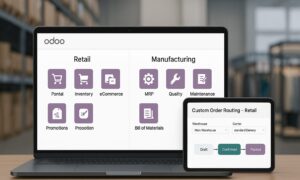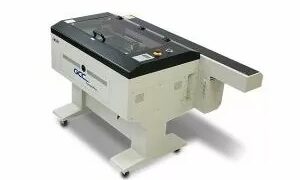Digitalization in business is all about converting data or material into a digital form and using digital methods for various operations and tasks. Businesses have been transitioning to digital for some time now because it helps them streamline their management and enhance their day-to-day operations. But many companies still struggle to keep up with the latest digital trends. By understanding the advantages of digitalization, you can help your business become more strategic, efficient, and profitable. Basically, digitalization goes hand in hand with having the competitive advantage, as long as you utilize the latest technologies in the best way.
Like other industries, the manufacturing sector can gain the competitive edge by turning to digitalization. Let us take a closer look at how manufacturers can do that.
Online 3D Printing Services
What is 3d printing? It is an additive manufacturing method for constructing three-dimensional objects from a computer-aided design file or a digital 3D model. 3D printing has been around for some time. But until recently, its uses were limited to prototyping and small-scale production due to high materials costs and slow production speeds. But 3D printing methods have become much more enhanced in the last couple of decades.
With 3D printing technology and innovation in materials, printing techniques, and color capabilities, 3D printing is being used more and more in the manufacturing industry. Not only are large companies using 3D printing methods. Small businesses are also increasingly using 3D printing manufacturing. The reason small businesses are able to do that is thanks to the internet. A small business does not need to invest in expensive 3D printers and the space to store them. Instead, it can outsource 3d printing services. With an online 3D printing service, you simply upload a CAD file and order your prototypes, parts, or products. Although 3D printing is becoming more widely used, it is still underused by small businesses. So, you can get the competitive advantage by using 3D printing today.
The Cloud
Cloud computing can help manufacturing companies to gain the competitive edge because it has so many advantages. By delivering IT services online in the cloud, businesses have greater flexibility and access via remote working. After all, by having all data in the cloud, anyone with permission can access any data at any time from anywhere.
Many manufacturing companies are adopting cloud computing as their IT infrastructure because it is more secure. The cloud prevents data loss, and it has automated backups and disaster recovery. At the end of the day, the cloud enables manufacturing companies to streamline business operations and become more efficient, which naturally helps to give them the competitive advantage.
Data Capture
Even if your whole system is digitalized, your company is sure to still handle paper documents like faxes. And it will also receive digital data in different forms, such as email or web pages.
By using intelligent data capture solutions, information can automatically be classified, extracted, validated, and shared. By getting ahead with data capture technology, you can gain the competitive advantage.
Automated Workflows
Automated workflows enable increased productivity, which helps to give any company the competitive edge. An automated workflow is a system that digitally produces, tracks, and manages documentation. Even though many businesses have turned to digital data methods in recent years, many still have old boxes of documents that have yet to be digitalized.That not only means old data takes longer to find. It also means valuable office space is taken up with boxes or filing cabinets of documents.
In this day and age, an effective workflow is vital. The more sustainable, cost-effective, and efficient your digital automated-workflow is, the better your manufacturing operations will be. Automated workflows reduce costs, improve efficiency, and enhance security.


































